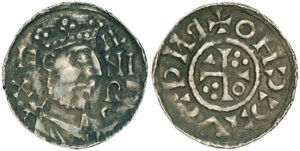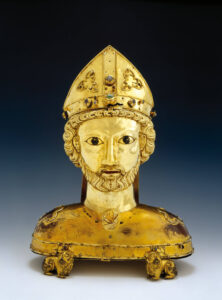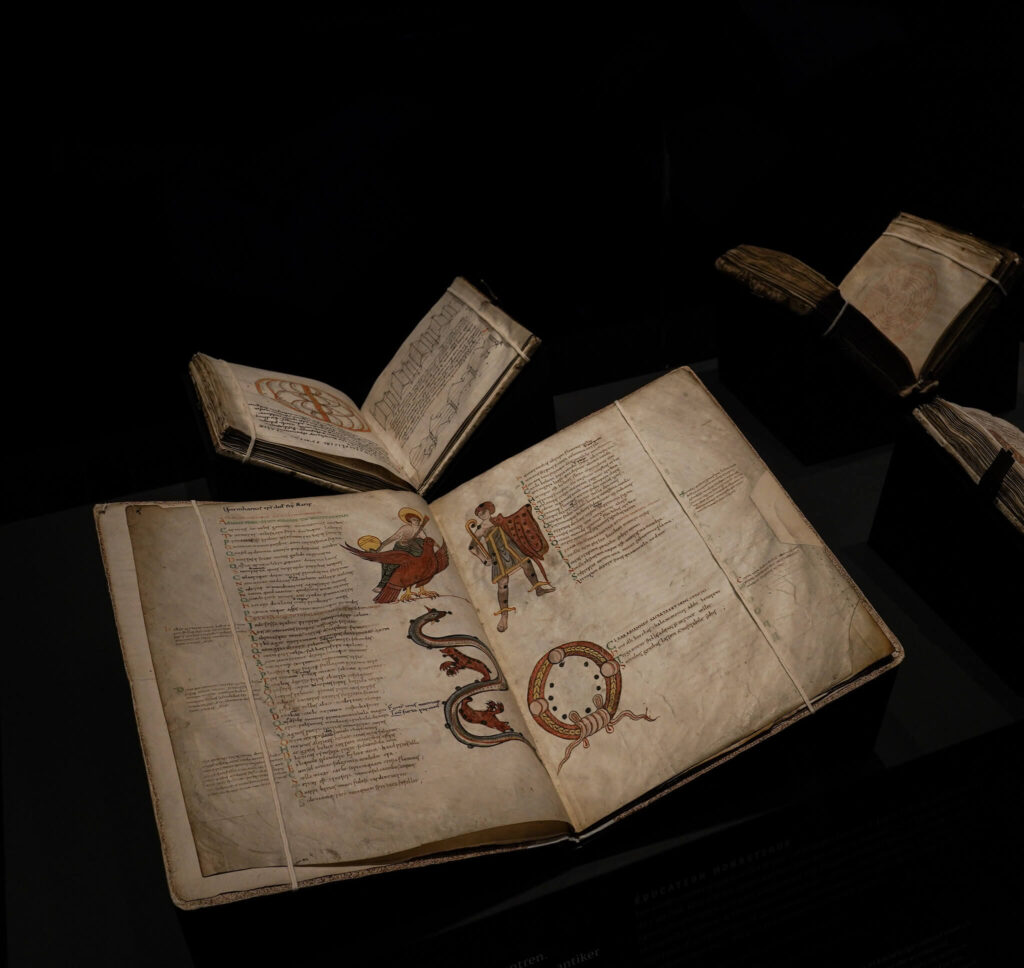The highlight of the festivities of Basel’s Cathedral Millennium is an exhibition by Basel Historical Museum called “Gold & Glory – Gifts for Eternity”. This is a co-production with the Musée de Cluny – musée national du Moyen Âge in Paris, where the Golden Altar Frontal that one belonged to the Basel Cathedral Treasury is now housed. The exhibition by Basel Historical Museum is to be held at Kunstmuseum Basel from 11 October 2019 to 19 January 2020.
This major new exhibition unfurls a panoramic cultural history of the reign of the last Ottonian ruler, viewed from multiple perspectives. Exquisite works on loan from private and public collections in both Europe and the United States provide vivid proof of the crucial role played by Emperor Henry II and his “golden gifts” both for Basel itself and for the region.
A magnificent array of medieval objects from the Ottonian Empire’s centres of cultural production and archaeological finds from the Basel region supply the larger context for the consecration of the cathedral as a watershed moment in Basel’s history. The exhibition will also shed light on how people lived a thousand years ago, Basel’s relations with the Kingdom of Burgundy, interactions between the imperial throne and the Church and the cult of Emperor Henry and Empress Kunigunde, both of whom were later canonized.
The highlight of the show will be the Basel Antependium, which for the first time in decades is to leave Paris and return temporarily to the place for which it was originally intended.

Basel and Henry II – the Context
Basel Cathedral was consecrated on 11 October 1019 in the presence of Henry II (r. 1002–1024). That ceremonial act concluded a process that defined the Upper Rhine region with enduring effect, namely the Kingdom of Burgundy’s ceding of Basel to East Francia and the Holy Roman Empire in 1006.
Henry II and his successors endowed the bishop of Basel with countless rights and properties, making him the most powerful prince in the region. What had been an essentially rural settlement on a bend in the River Rhine was soon transformed into a major urban centre. This new status is apparent as early as the second half of the 11th century whether in the building of the city wall or later in the much richer archaeological finds from this period. The structure, development and florescence of the trinational region on the Upper Rhine can ultimately be traced back to these events.
The emperor’s lavish gifts – the “Gifts of Henry” – formed the foundation stone for the Cathedral Treasury, which over the centuries grew to become one of the most important church treasuries in Switzerland. Politically, the events of 1019 paved the way for the rule of the bishops and the consolidation of their power base on the Upper Rhine and in the Jura, from which Basel also profited. As patrons of the city, Henry II and his consort Kunigunde became enshrined in Basel’s collective memory, especially following their canonization in 1146 and 1200 respectively. Their veneration in Basel and the popularity and political role of this cult in the life of the city are the subject of the final section of this spectacular show.

The Main Themes
The exhibition explores the following themes:
- – Europe in 1000 A.D. with archaeological evidence of life in Basel as it was 1000 years ago
- – The Kingdom of Burgundy’s ceding of Basel to Henry II
- – The Ottonian rulers, especially Emperor Henry II
- – The connection between the Church and Henry II as secular ruler
- – Henry’s religious self-image as a ruler
- – Art and culture in Ottonian times
- – The consecration of Basel Cathedral in 1019 and the “Gifts of Henry”
- – The long-term consequences of Henry’s largesse for Basel
On the objects
- – The objects on show include many from lenders in Switzerland, the United States, France, Germany, the Netherlands, and the Vatican.
- – The full breadth of the arts and crafts practised in Ottonian times is represented, including book illumination, goldsmithing, ivory carving, sculpture and bronze casting.
- – Important sources (documents, coins, seals etc.) are also presented to provide a larger context for these impressive objects.
- – The highlight of the show is the only two “Gifts of Henry” to have survived: the Golden Altar Frontal and the Cross of Heinrich.

Collaborating closely with Basel Historical Museum, researchers at the University of Basel are currently engaged in making the Basel Cathedral Treasury digitally accessible. The results of their work will serve as a basis for interdisciplinary projects aimed at probing the opportunities and possibilities opened up by computer-assisted methods in the humanities. They will also be made available to the wider public at the same time. Objects that for a thousand years have been part of Basel’s history can thus be experienced in a completely new way.
The lavishly illustrated catalogue, Gold & Ruhm – Kunst und Macht unter Kaiser Heinrich II., is to be published by Hirmer Verlag, Munich. Editors: Marc Fehlmann / Michael Matzke / Sabine Söll-Tauchert
24 x 27 cm, hardback, ISBN: 978-3-7774-3404-9
For more information, visit the website of the museum.
That’s all very interesting, but you want to know more about coins? If you speak at least some German, we recommend reading the German version of this article, where the curator of the Basel Historical Museum’s coin cabinet gives insights into the coins from the age of Emperor Henry II. And of course you will find many coin images there!




